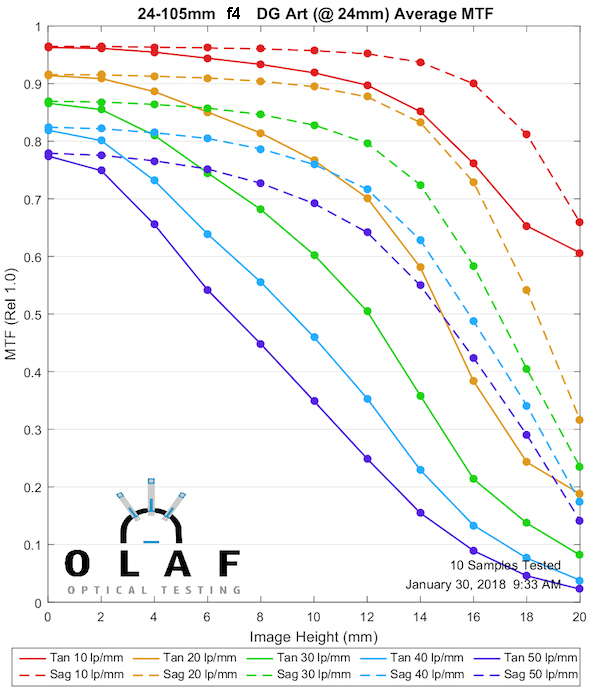ErikKaffehr
Well-known member
Hi,
If we buy a new system, it makes a lot sense to start with doing an initial checkup. Doing this is useful as it:
I would always start testing a new camera or a new lens by shooting a suitable test target. The one I would recommend is designed by Bart van der Wolf and available here: https://www.bvdwolf.nl/foto/test_targets/test_targets.html, the one I would use is the camera test target.
The image would look like this, in Lightroom:

You see like 32 spokes of a wheel converging at the centre.


If the image is asymmetrical, like this:

It would either imply camera shake or astigmatism, but this is supposed to be the center and it is not probable that it is caused by astigmatism.
In this case, the first image was shot with Mirror Lock up (MLU) while the second one was without. In both cases a Really Right Stuff Versa 33S tripod was used on semihard floor and with a Arca Swiss D4 head.
Having done that, you may make an aperture series and stop down until the spokes converge into a gray mass, without any artefacts. That is the aperture transfers near zero contrast at the pixel level. Stopping down further will give less detail and the detail lost will not be possible to regain with sharpening.
Done that, you may change the camera position, so you get the test charts into each corner of the frame. Refocus for each corner. if you have the corner crops really good, you are a happy camper.
To test corners takes a bit more "biffy" procedure, described here: Lens screening testing
Jim's method is to shoot a largish subject at so long distance that camera rotation is not affecting sharpness.
There are some more things to do, but this a piece of info. Right now!
Best regards
Erik
You see a zone with false colour at the centre.
If we buy a new system, it makes a lot sense to start with doing an initial checkup. Doing this is useful as it:
- Indicates any serious problems with the system.
- Gives you a reference. So you can check that your system has not been negatively affected by a drop.
- Gives you a baseline information on it's performance.
- Can give you information on putting it into best use.
I would always start testing a new camera or a new lens by shooting a suitable test target. The one I would recommend is designed by Bart van der Wolf and available here: https://www.bvdwolf.nl/foto/test_targets/test_targets.html, the one I would use is the camera test target.
- I would make a print of it and place it in the center of the frame at 40-50X focal length, like at 5m distance for an 80 mm lens.
- The camera would be mounted on a steady tripod, focused using live view with maximum magnfication at maximum aperture.
- The camera would be used with mirror lock up and either cable release or self timer.
The image would look like this, in Lightroom:

You see like 32 spokes of a wheel converging at the centre.

- You see some moiré like colour and that the lines start bending. That means that the lens delivers more detail than the sensor can resolve. This will create fake detail and colour artefacts.
- But, that is good news, because it indicates that the lens delivers a sharp image.
- If you don't see those funny patterns, it means the lens resolves less than the sensor. Could be bad focus or limitation of the lens. You could stop down until you see these patterns. Optimal aperture is where these fake signals are strongest.


If the image is asymmetrical, like this:

It would either imply camera shake or astigmatism, but this is supposed to be the center and it is not probable that it is caused by astigmatism.
In this case, the first image was shot with Mirror Lock up (MLU) while the second one was without. In both cases a Really Right Stuff Versa 33S tripod was used on semihard floor and with a Arca Swiss D4 head.
Having done that, you may make an aperture series and stop down until the spokes converge into a gray mass, without any artefacts. That is the aperture transfers near zero contrast at the pixel level. Stopping down further will give less detail and the detail lost will not be possible to regain with sharpening.
Done that, you may change the camera position, so you get the test charts into each corner of the frame. Refocus for each corner. if you have the corner crops really good, you are a happy camper.
To test corners takes a bit more "biffy" procedure, described here: Lens screening testing
Jim's method is to shoot a largish subject at so long distance that camera rotation is not affecting sharpness.
There are some more things to do, but this a piece of info. Right now!
Best regards
Erik
You see a zone with false colour at the centre.


